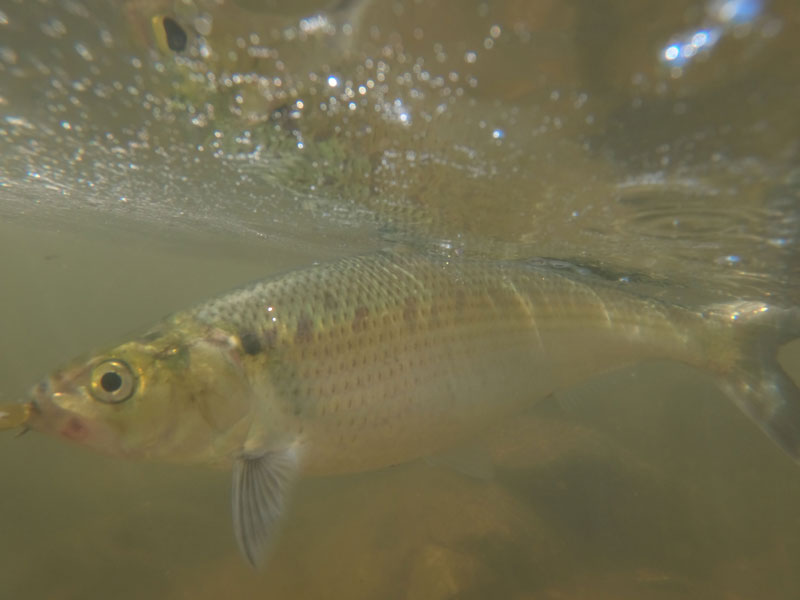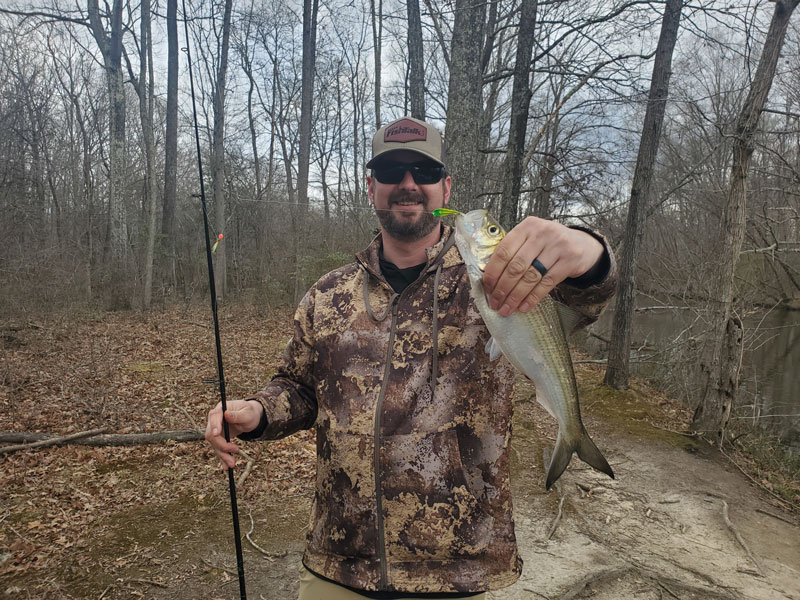There’s an annual spring migration taking place this month in many of the Chesapeake’s tributaries which will trigger a different migration of sorts — one involving fishermen jumping into their cars, boats, and kayaks as shad make their way up into rivers like the Susquehanna, Potomac, Rappahannock, and James. Plenty of anglers will be on their way to intercept them.

One of the beautiful things about the shad run is that everyone can get in on the action. They can be caught from the shoreline, piers, or just about any type of watercraft. You don’t need highly specific gear, and shad lures are about as inexpensive as anything ever used to fool a fish. If you enjoy feeling a tug and watching fish jump, you can easily get in on this particular game. There are, however, some unconventional ways of suckering shad into biting which have been brought to our attention in the recent past. Ready to try something new?
Quick & Simple Custom Shad Lures
By Larry Lee
Last year while fishing hickory shad on the Rappahannock near Fredericksburg, I began using a rig that I developed from ordinary tackle components. I was inspired by the way butterfly jigs allow the hook to be connected to the line directly without a spoon or lure body in between.
The lure is made by placing a #2 willow blade on a snap swivel, convex side first. Then place a #2 straight shank hook like a VMC 9255 on the snap, with the hook opening away from the blade and the shank along the concave side of the blade. It should resemble a Johson Silver Minnow spoon except the blade and hook are connected to the snap and not each other.

To fish this, place an inline sinker of one-quarter to one-half an ounce approximately 12” to 18” ahead of the snap swivel. The retrieve can be slow and steady or in a jerk/pause rhythm. The blade will wobble or spin depending on the speed of retrieve, current, and shape of the snap.
I have caught dozens of hickories with white, chartreuse, red, and silver blades. The blades can even be doubled to give two color flashes. Very few fish have thrown the lure and every fish has been hooked in the center of the lower jaw. I call it the "Larry Rig" but I really don't care what people call it, I just thought FishTalk readers might find it interesting.
Easy Lure Modification for Shad Fishing
By Harry A.
I just read Spring Shad Fishing on your website, and while there wasn’t anything wrong with the article, you missed the easiest way to tie a tandem shad rig. Don’t bother tying it at all, just buy a Sabiki rig and cut it down so there are two hooks per section. Not all Sabiki rigs will work, but there are a million varieties and the ones with lures about an inch long with some flashy tinsel work great. I’ve found the ones with pink flies, tinsel, and a bead in front are best. I tie or clip a half-ounce weight to the bottom for deep water and fast current, or in some of the shallower spots, crimp a large split-shot to the bottom. Try it, it works!
Combatting Cover While Fishing for Shad
By Noah Carter
Last year I was trying to fish a small Western Shore creek that gets a good shad run, but the clear spots along the bank were taken. I found a spot to stand at, but there were so many tree branches hanging over that even being careful, I hooked more trees than fish. Then, I had a brainstorm: I put a very thin quill bobber a couple feet above my rig and instead of trying for a long cast, just flipped it out a few feet from shore. I let the current take it a good 60 or 70 feet downstream, then began a slow retrieve pulling the bobber along the surface. I must have caught two dozen shad that day, and after that I never hooked another tree.
